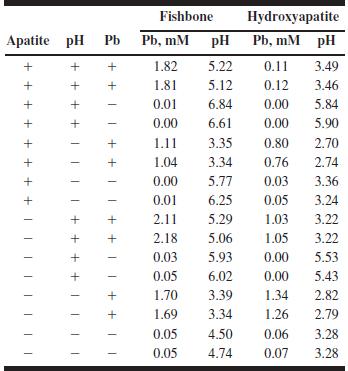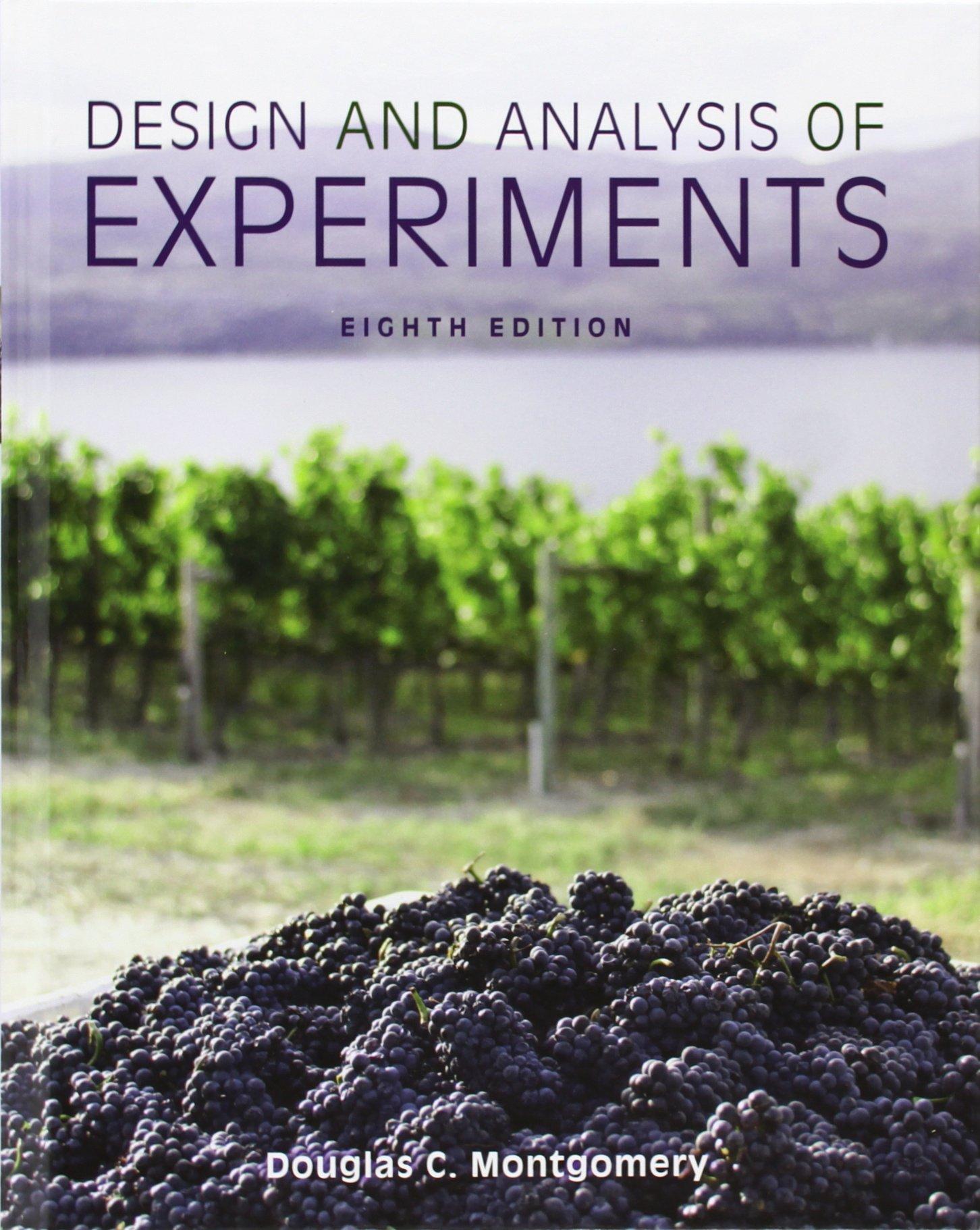6.42. An article in the Journal of Hazardous Materials (Feasibility of Using Natural Fishbone Apatite as a
Question:
6.42. An article in the Journal of Hazardous Materials
(“Feasibility of Using Natural Fishbone Apatite as a Substitute for Hydroxyapatite in Remediating Aqueous Heavy Metals,”
Vol. 69, Issue 2, 1999, pp. 187–196) describes an experiment to study the suitability of fishbone, a natural, apatite rich substance, as a substitute for hydroxyapatite in the sequestering of aqueous divalent heavy metal ions. Direct comparison of hydroxyapatite and fishbone apatite was performed using a three-factor twolevel full factorial design. Apatite (30 or 60 mg) was added to 100 mL deionized water and gently agitated overnight in a shaker. The pH was then adjusted to 5 or 7 using nitric acid.
Sufficient concentration of lead nitrate solution was added to each flask to result in a final volume of 200 mL and a lead concentration of 0.483 or 2.41 mM, respectively. The experiment was a 23 replicated twice and it was performed for both fishbone and synthetic apatite. Results are shown in Table P6.14.

(a) Analyze the lead response for fishbone apatite. What factors are important?
(b) Analyze the residuals from this response and comment on model adequacy.
(c) Analyze the pH response for fishbone apatite. What factors are important?
(d) Analyze the residuals from this response and comment on model adequacy.
(e) Analyze the lead response for hydroxyapatite apatite.
What factors are important?
(f) Analyze the residuals from this response and comment on model adequacy.
(g) Analyze the pH response for hydroxyapatite apatite.
What factors are important?
(h) Analyze the residuals from this response and comment on model adequacy.
(i) What differences do you see between fishbone and hydroxyapatite apatite? The authors of this paper concluded that that fishbone apatite was comparable to hydroxyapatite apatite. Because the fishbone apatite is cheaper, it was recommended for adoption. Do you agree with these conclusions?
Step by Step Answer:







